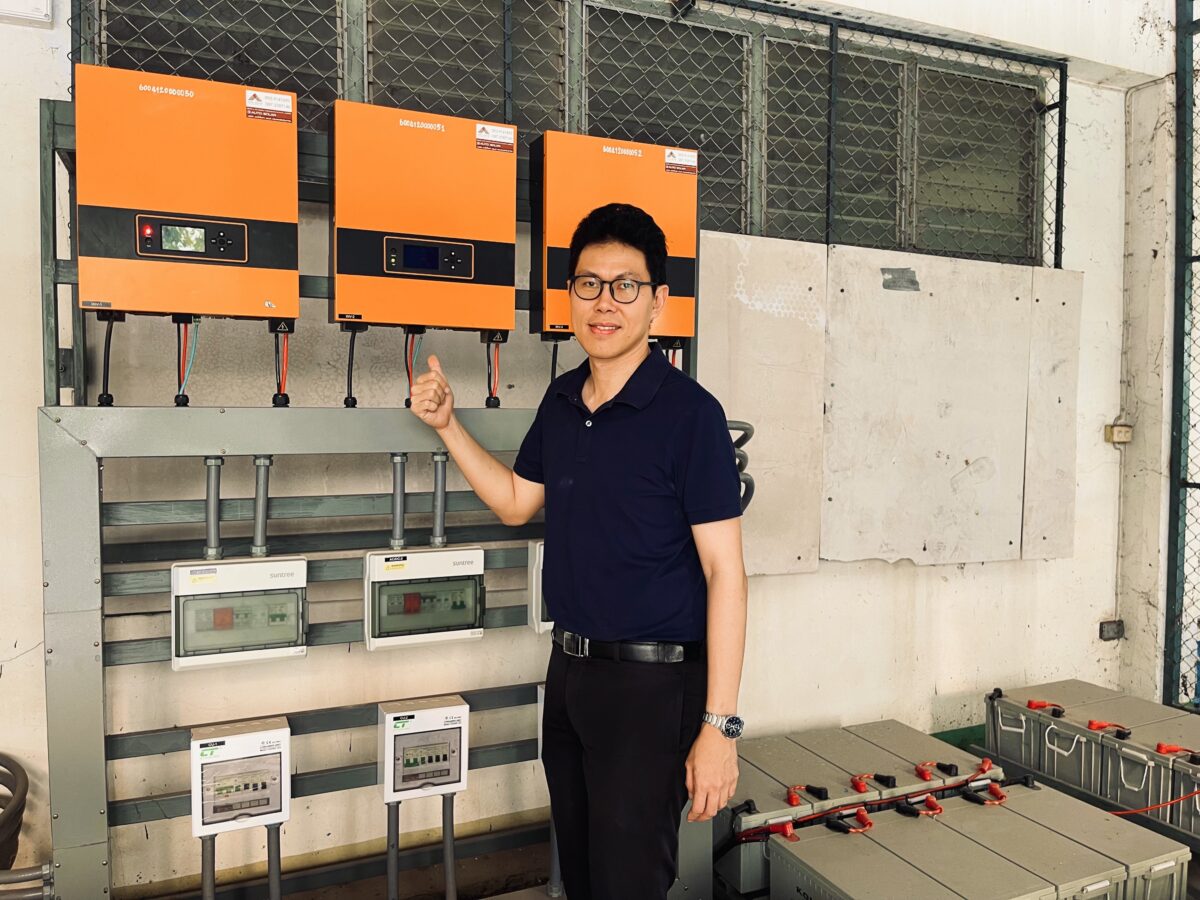to lower electricity bill It became viral during the summer when a guy shared his lowered electricity tariff after he had installed solar cells at home, from 4,000 – 5,000 baht monthly to just only 71 baht. Many dreamed of solar cell installation, but is it really worth the cost?
Assoc. Prof. Rongrit Chatthaworn, Ph.D., a lecturer of the Department of Electrical Engineering, Faculty of Engineering, Khon Kaen University, now confirmed that solar cells that generate electricity for household use will certainly decrease your electricity bill. Nevertheless, before decreasing your electricity bill, there is something one must take into account, that is the cost of installation of solar cells.
One kilowatt of solar cell costs 30,000 – 50,000 baht depending on the quality of the inverter. According to the Electricity Authority’s regulation, users of 3-phase home electricity can install no more than 10 kilowatts. A house consuming one phase can install a maximum of 5 kilowatts. “A 5-kilowatt installment for home users who use electricity during the day time, on normal sunny days, will be able to lower their bill at 80-120 baht per day.
Or if it is sunny all through the month, then they can lessen their tariff at 2,400 – 3,600 baht monthly.” Assoc. Prof. Rongrit Chatthaworn added that if asked about the period of time of worthiness, then the answer is it depends on your usage behavior. If regular consumption is during the day time, then the cost will pay itself quickly. But is the consumption is mostly during the night time, then the return period will extend. Selling power from solar cells to the Electricity Authority is at the rate of 2.2 baht per kilowatt-hr. This is little when compared to the rate we buy from the Electricity Authority. On average, the return period is roughly 4-8 years. 3 types of solar cell installation for household consumption:
There are 3 types of roof installation of solar cells: 1. On Grid – Solar cells distribute electricity coupled with receiving electricity from the Electricity Authority. In general, there is no need for battery.
2. Off Grid – Use of electricity from solar cells only, not using electricity from the Electricity Authority. Installation of this type requires batteries for use during the night time. This type of installation may not be appropriate due to the following 2 factors: First – the cost of battery is very high. For example, if the solar cell installation costs 200,000 baht, the cost of batteries may be as high as 100,000 baht. Second – Generation of electricity from solar cells is uncertain. If there is no battery and no power is bought from the Electricity Authority, users may experience blackout.
3. Hybrid – is the use of electricity from both solar cells and from the Electricity Authority. There is battery installation to store electricity from the solar cells for use during the night time. When this is not enough, then power from the Electricity Authority grid can be used. “When considering the worthiness of the First Type of installation or On Grid, then the return is fastest as there is no cost from battery installation.”
Survey of important factors before deciding to install solar cells:

Assoc. Prof. Rongrit suggests that before installing solar cells, one should consider other important factors including the consumption behaviors of household members. If there is no consumption during the day time, but only using it during the night time, then it might not be worthwhile. Meanwhile, the surface area on the roof must be adequate for installation of solar cells. One kilowatt of electricity requires 7-8 square meters. The position for the solar cells is good if it faces the sunlight. From the information of the Ministry of Energy, solar cells should face the South and are 15 degrees from the ground. This will make the system mostly efficient. Another thing is, there should not be any building or trees obstructing sunlight. In addition, in the house, there should be enough space for installation of supporting equipment, especially the inverter that changes the direct current of the solar cells to alternate current so that it can be used in the household. The position for installing this must be inside, not on the roof. The point of installation must also be safe from flood. Up to now, Khon Kaen University has performed studies and research on increasing the efficiency of electricity generation from solar cells, such as automatic changing of the connection of solar cells when there is obstruction. Studies have also been conducted on prediction of electricity generation from solar cells as this generation is uncertain and can vary according to the weather. Accurate prediction will help increase the efficiency in the control of electricity system.
News: Phanit Khatanak





